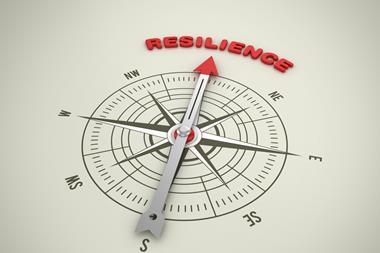Horst Simon, founder of The Risk Culture Builder, explores the connection between storm chasing and the effective management of risk.
Storm chasing is a unique and exhilarating activity that involves pursuing and observing severe weather phenomena, particularly storms and tornadoes.
While it may seem like an extreme and risky hobby, there are valuable lessons from the risk management strategies employed by storm chasers that can be applied to business scenarios.

By drawing the parallels between storm chasing and business operations, organisations can adopt a proactive approach to the effective management of risk, ensuring they are well-prepared to navigate uncertainties, capitalise on opportunities, and stay ahead of the competition in dynamic market environments.
How learning from storm chasers can lead to effective risk management
In an era of rapid technological advancements, market fluctuations, and global uncertainties, businesses face unprecedented challenges.
The ability to navigate these complexities and make informed decisions is crucial for sustained success and competitive advantage.
Drawing inspiration from the world of storm chasing, where risk management is paramount, applying similar thinking and concepts can shape the future for the effective management of risk in businesses.
Storm chasers face a myriad of risks, including unpredictable weather patterns, dangerous road conditions, and the inherent danger of being near powerful storms.

However, the key to their success lies in their ability to assess and manage these risks effectively.
Storm chasers employ advanced meteorological knowledge, cutting-edge technology, and well-thought-out strategies to minimise the inherent dangers associated with their pursuit.
One of the hallmarks of successful storm chasing is the deep understanding of meteorology.
Storm chasers often have backgrounds in atmospheric science or related fields, providing them with the knowledge needed to interpret weather patterns, predict storm development, and identify potential hazards.
This expertise allows them to make informed decisions about when and where to chase, reducing the likelihood of encountering life-threatening situations.
To achieve success in today’s Global Marketplace, business leaders need to fully understand and know the “meteorology” of modern business.
Just as storm chasing is an inherently risky endeavor, running a modern business operation is not very different and business leaders can apply the strategy and practices storm chasers follow to fully exploit opportunities to take risk for reward.
However, those who engage in this pursuit must have and demonstrate a remarkable ability to manage and mitigate the associated dangers.
Lesson one: Advanced technology as a game-changer
Modern storm chasers utilise a plethora of sophisticated tools and technology to enhance their ability to manage risks effectively.
High-resolution weather models, GPS tracking, and communication devices play a crucial role in allowing storm chasers to stay ahead of storms, navigate safely, and maintain constant contact with their teams and meteorological sources.
“Businesses can harness advanced tools for data analytics, artificial intelligence, and real-time communication.”
This integration of technology significantly improves their situational awareness, reducing the risk of being caught off guard by rapidly changing weather conditions.
Just as storm chasers leverage cutting-edge technology to stay ahead of severe weather, businesses can harness advanced tools for data analytics, artificial intelligence, and real-time communication.
This not only enhances situational awareness but also allows for predictive modelling, giving businesses a competitive edge in anticipating market trends and customer behaviours.
Lesson two: Strategic planning for sustainable success:
Successful storm chasers are meticulous planners, carefully analysing weather forecasts and storm prediction models to identify optimal chasing locations.
They consider factors such as storm intensity, terrain, and road networks to plan safe and effective routes. This strategic approach minimises the likelihood of getting caught in the most dangerous parts of a storm while maximising the chances of observing its awe-inspiring elements.
Successful storm chasers also plan their routes based on weather forecasts and terrain considerations. Similarly, businesses can achieve sustainable success through strategic planning that involves analysing market trends, understanding competitor landscapes, and developing robust business strategies.
This approach positions companies to navigate challenges and seize opportunities in an ever-evolving business environment.
Lesson three: Continuous monitoring and adaptation in dynamic environments
The storm chaser’s ability to adapt to changing weather conditions is a valuable lesson for businesses.
In a dynamic market, continuous monitoring of key performance indicators, customer preferences, and competitor movements is imperative.
By remaining agile and adaptive, businesses can respond proactively to market shifts, ensuring resilience and long-term viability.
Lesson four: Data-driven decision-making for informed strategies
Analysing statistics on storm chasing attempts provides valuable insights into the effectiveness of risk management within this community.
While there have been incidents of accidents and close calls, most storm chasers prioritise safety, resulting in a relatively low rate of severe incidents.
The ability to gather data and learn from both successful and unsuccessful chases contributes to continuous improvement within the storm chasing community.
“Informed decision-making based on data-driven insights enhances risk assessment”
Storm chasers constantly and consistently collect and analyse data during pursuits to improve their understanding of storms.
Similarly, businesses can leverage on-going data analytics to gain insights into customer behaviour, market trends, and internal performance metrics.
Informed decision-making based on data-driven insights enhances risk assessment and allows for the formulation of effective business strategies.
Lesson five: Scenario planning for proactive risk mitigation
Storm chasers run through various scenarios based on weather forecasts, anticipating potential risks and outcomes.
Similarly, businesses can embrace scenario planning to prepare for various contingencies, such as economic changes, market fluctuations, or unexpected disruptions.
This proactive approach enables businesses to develop contingency plans and make well-informed decisions in the face of uncertainty.
Lesson six: Investment in knowledge and expertise for resilient businesses
As mentioned, storm chasers rely on deep meteorological knowledge for successful pursuits. In the business world, investing in employee training, industry expertise, and knowledge-sharing initiatives contributes to the effective management of risk.
Well-trained and fully informed employees are better equipped to identify potential risks, make swift and agile strategic decisions, to contribute to the overall resilience of the organisation.
As businesses leaders navigate the intricacies of the modern marketplace, the lessons learned from storm chasing offer a blueprint for effective risk management.
“The future of effective risk management in businesses lies in adopting a proactive, adaptive, and informed mindset”
By embracing advanced technology, strategic planning, continuous monitoring, data-driven decision-making, scenario planning, and investments in knowledge and expertise, businesses can position themselves at the forefront of effective risk management.
This holistic approach not only enhances resilience but also propels organisations towards sustained success in an environment characterised by uncertainty and change.
The future of effective risk management in businesses lies in adopting a proactive, adaptive, and informed mindset, drawing inspiration from the dynamic world of storm chasing.
Horst Simon has been in commercial banking and the risk management consultancy industries for more than four decades.
Since 2010, he has been a risk management consultant and trainer and is associated with leading global players in these fields. He delivered non-financial risk management training and co-developed an operational risk leadership training program for a large global bank.
In 2011 he built an online Risk Culture Maturity Assessment tool with a leading UK Consultancy and last year he contributed to the Global Risk Culture study by the ACCA.
This article was originally published on www.riskculturebuilders.com and re-published with his consent.














No comments yet